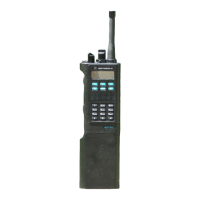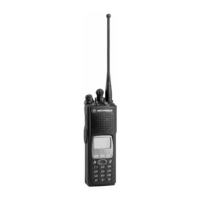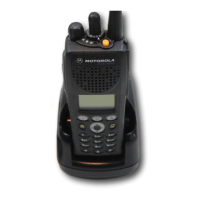Foreword
This manual covers all models of ASTRO™ Digital XTS 3000™ portable radios, unless otherwise specified. It includes all the
information necessary to maintain peak product performance and maximum working-time using the pass/fail service
approach. This basic level of service is typical of some local service centers, self-maintained customers, and some distributors.
Included in this manual are: radio specifications for the 800MHz frequency band; a general description of ASTRO Digital XTS
3000 models; recommended test equipment, service aids, and tools; radio alignment procedures; fundamental disassembly/
reassembly procedures; and general maintenance recommendations.
For details on the operation of the radio, or board- or component-level troubleshooting, refer to the applicable manuals
available separately. To help you with your selection, a list is provided in this manual, titled “Related Publications.”
Safety Information
In 1991 the Institute of Electrical and Electronics Engineers (IEEE), and in 1992 the American National Standards Institute
(ANSI), updated the 1982 ANSI Standard for safety levels with respect to human exposure to RF energy. Over 120 scientists,
engineers, and physicians from universities, government health agencies, and industry, after reviewing the available body of
research, developed this updated Standard. In March, 1993, the Federal Communications Commission (FCC) proposed the
adoption of this updated Standard.
Motorola subscribes to the same safety standard for the use of its products. Proper operation of this radio will result in user
exposure substantially below FCC recommended limits:
•
DO NOT
hold the radio with the antenna very close to, or touching, exposed parts of the body, especially
the face, ears, or eyes, while transmitting. Hold the radio in a vertical position with the microphone
two to three inches
away from the lips.
•
DO NOT
hold the transmit switch (PTT) on when not actually desiring to transmit.
•
DO NOT
allow children to play with any radio equipment containing a transmitter.
•
DO NOT
operate this equipment near electrical blasting caps or in an explosive atmosphere. Under certain conditions,
radios can interfere with blasting operations. When you are in the vicinity of construction work, look for, and observe,
signs cautioning against radio transmissions. If radio transmission is prohibited, you must not transmit until out of the
area. Furthermore, you must turn off your radio to prevent any accidental transmission.
•
DO NOT
replace or charge batteries in a hazardous atmosphere. Contact sparking may occur while installing or removing
batteries and cause an explosion.
•
Turn the radio off when removing or installing a battery.
Anyone intending to use a radio in a hazardous area is advised to become familiar with the subject of intrinsic safety and with
Section 70 of the National Fire Code, which is commonly referred to as Article 500 of the National Electric Code. Use of
anything but factory supplied components may affect the approval and safety of the radio. Likewise, it is advised that servicing
should be performed only by qualified personnel who adhere to the following Factory Mutual (FM) required warning:
Modification of FM approved intrinsically safe radios will negate Factory Mutual Research
Corporation (FMRC) approval.
Airbag Warning Statement
VEHICLES EQUIPPED WITH AIR BAGS
An air bag inflates with great force. DO NOT place objects, including communication equipment, in the area over
the air bag or in the air bag deployment area. If the communication equipment is improperly installed and the air
bag inflates, this could cause serious injury.
•
Installation of vehicle communication equipment should be performed by a professional installer/technician qualified in
the requirements for such installations. An air bag’s size, shape and deployment area can vary by vehicle make, model and
front compartment configuration (for example, bench seat vs. bucket seats).
•
Contact the vehicle manufacturer’s corporate headquarters, if necessary, for specific air bag information for the vehicle
make, model and front compartment configuration involved in your communication equipment installation.
Manual Revisions
Changes which occur after this manual is printed are described in “FMRs.” These FMRs provide complete information on
changes including pertinent parts listing data.
!
W A R N I N G
!
!
W A R N I N G
!

